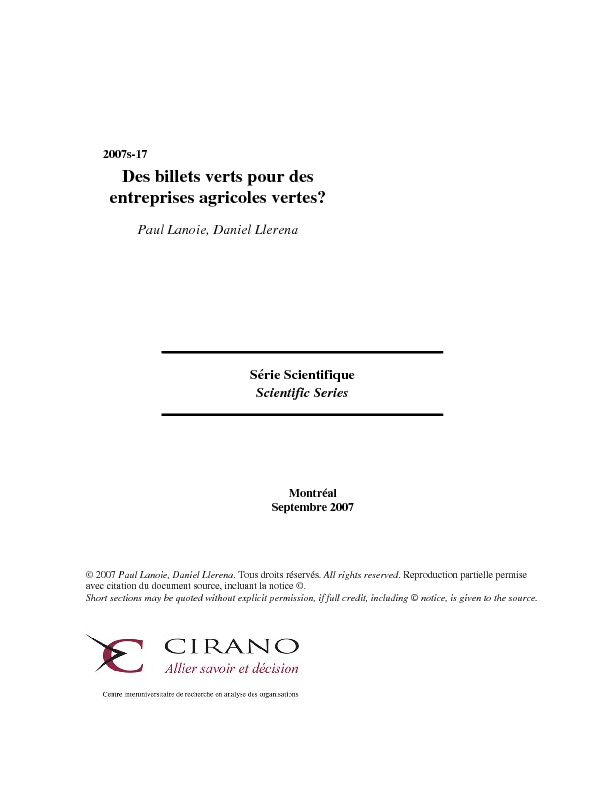Des billets verts pour des entreprises agricoles vertes?
The conventional wisdom about environmental protection is that it comes at an additional cost on farmers imposed by the government, which may erode their global competitiveness. However, during the last decade, this paradigm has been challenged by a number of analysts. In particular, Porter (Porter, 1991; Porter and van der Linde, 1995) argues that pollution is often associated with a waste of resources (material, energy, etc.), and that more stringent environmental policies can stimulate innovations that may compensate for the costs of complying with these policies. In fact, there are many ways through which improving the environmental performance of a farm can lead to a better economic or financial performance, and not necessarily to an increase in cost. To be systematic, it is important to look at both sides of the balance sheet. Following the framework developed by Reinhardt (2000), Lankoski (2000, 2006), and Lanoie and Ambec (2007), we can argue, first, that a better environmental performance can lead to an increase in revenues through the following channels: i) a better access to certain markets; ii) the possibility to differentiate products and iii) the possibility to sell pollution-control technology. Second, a better environmental performance can lead to cost reductions in the following categories: iv) regulatory cost; v) cost of material, energy and services; vi) cost of capital, and vii) cost of labour. In this article, we want to evaluate how this framework is relevant for the agricultural sector. In other words, for each of the seven channels identified above [i) to vii)], we want to see how it can be applied to the agricultural sector, while presenting concrete illustrations under the form of short case studies. Although other authors have discussed the profitability of different new agro-environmental practices; to our knowledge, nobody has done it in such a systematic way as that presented here. Moreover, the concrete examples from France and Quebec that we present may inspire farmers who are still debating as to, whether or not, they should green their activities. We conclude that there are many opportunities to improve at the same time the environmental and the financial performance in the agricultural sector, but maybe less than in other sectors.
[ - ]




